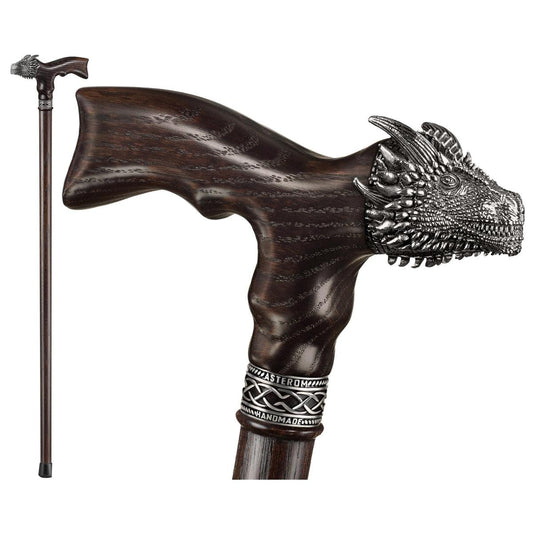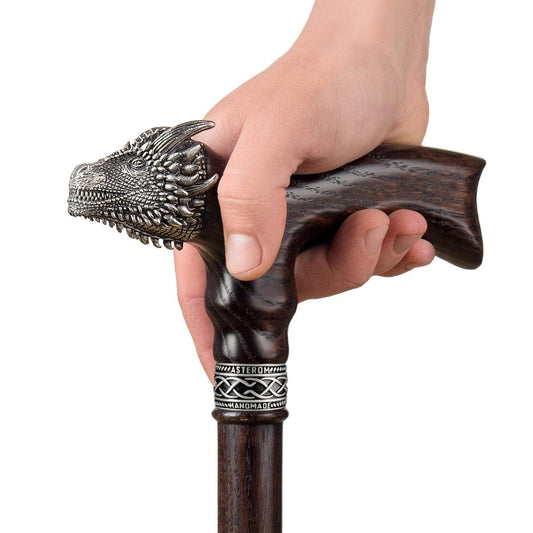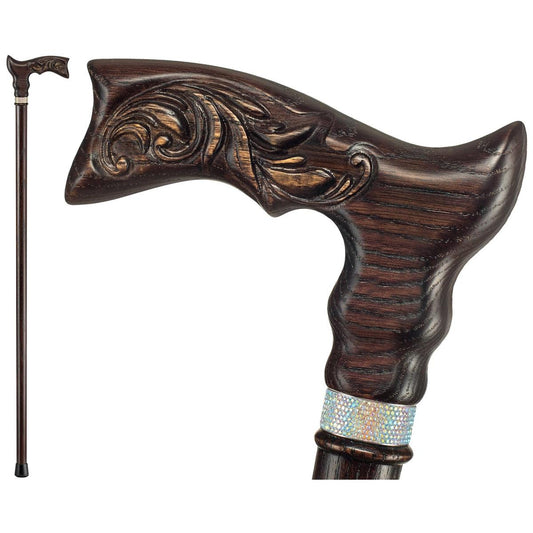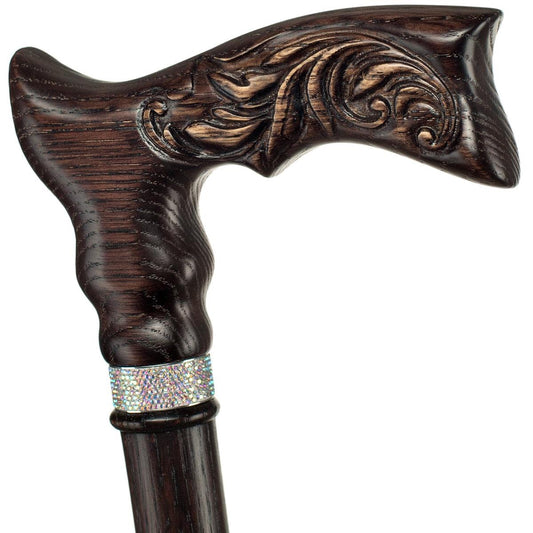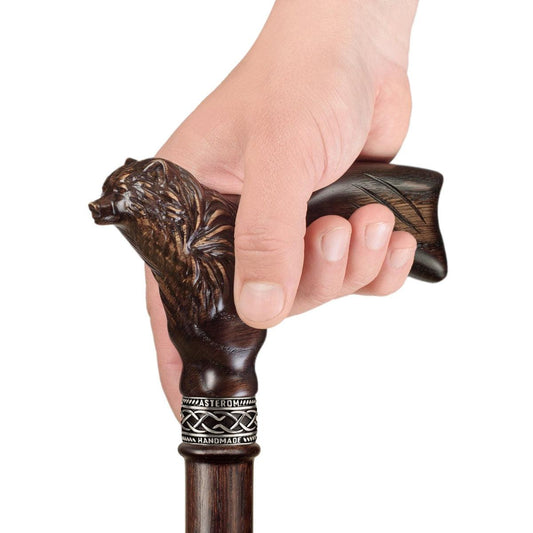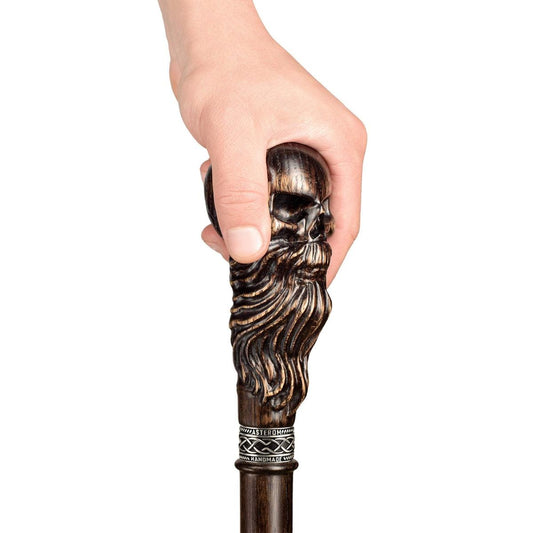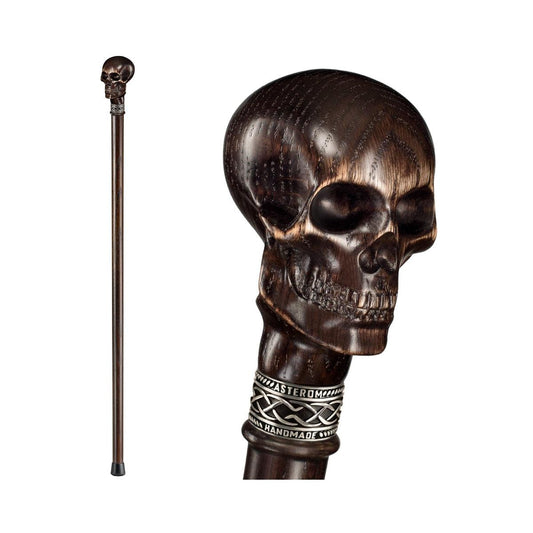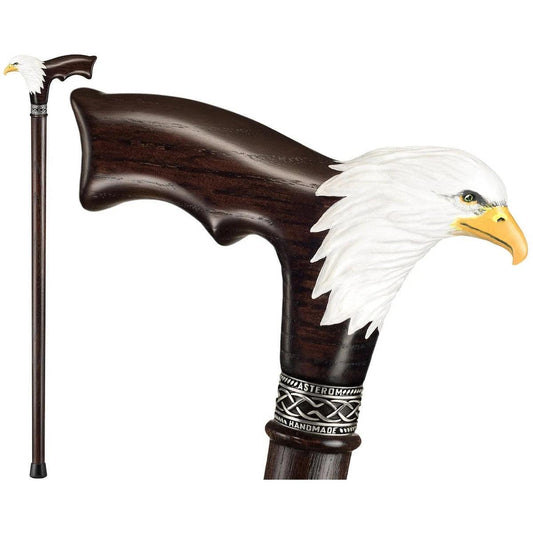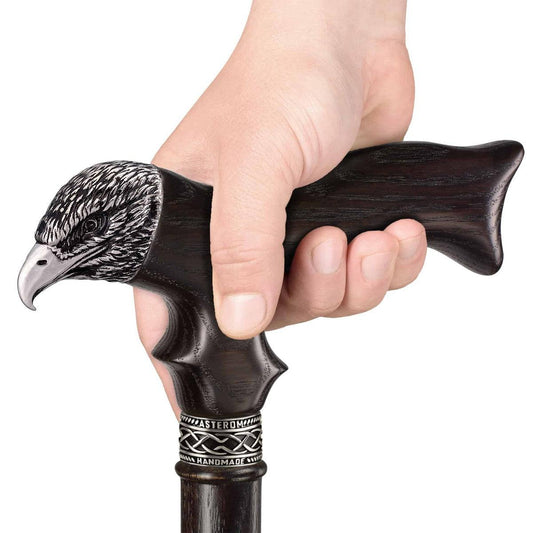As we enter the later stages of life, the world can appear to be a different place altogether. The once vibrant and energetic steps we took in our youth may become more measured and cautious, while the ground beneath our feet may seem a little less sturdy.
As someone who has had the privilege of experiencing life’s intricate dances, I, Alexander Sterling, have spent a great deal of time contemplating the delicate balance that aging brings.
Today, I would like to extend an invitation to you to embark on a journey with me - a journey that delves into the true essence of balance in the elderly and explores the various tools and techniques that can be employed to ensure every step is taken with confidence.
So, shall we get started?
The Significance of Balance in the Elderly
In the waltz of life, balance is the rhythm that guides our steps. As the years add layers of experience and wisdom to our souls, they also bring subtle challenges to our physical equilibrium. The significance of balance in the elderly transcends mere mobility; it’s a dance of confidence, independence, and grace.
Imagine, if you will, a grand ballroom filled with dancers. Among them is Lady Eleanor, a woman of advanced years, yet she moves with the grace of a seasoned ballerina. Her every step, every twirl, speaks of a balance nurtured over time. It’s not just about not tripping over her feet; it’s about moving through life’s ballroom with poise and assurance.
A Dance with Gravity
As we age, gravity becomes an ever-present force that can impact our balance and mobility. With muscles and joints that may not be as responsive as they once were, staying upright and in sync with gravity can feel like a delicate dance.
But with the right steps, mastering balance can help us stay steady on our feet and maintain our independence.
FAQ: Why is balance so crucial in the golden years?
Balance is the key to independence and autonomy in the elderly. It allows for freedom of movement, reduces the risk of injuries from falls, and enhances overall quality of life.

How does age affect our natural balance?
With age, changes in muscle mass, bone density, vision, and even inner ear function can impact one’s natural balance, making it essential to nurture and maintain.
Action Step: Engage in activities that challenge and improve balance, such as standing on one foot while brushing teeth or practicing gentle yoga poses. These small daily practices can make a significant difference over time.
The Psychological Impact of Balance
As we age, our mental and emotional health is just as important as our physical health. The ability to walk steadily can make a big difference in how we feel about ourselves and our ability to enjoy life.
If one is afraid of falling, they might start avoiding social activities and stop doing the things they love. This can lead to feeling sad and lonely.
That's why it's important for seniors to feel confident and balanced, so they can continue to stay active and engaged in life.
FAQ: How does balance influence the mental well-being of seniors?
A strong sense of balance instills confidence, reducing anxiety related to mobility. This confidence, in turn, promotes social interaction, exploration, and an overall positive outlook on life.
What are the psychological repercussions of balance issues in the elderly?Balance issues can lead to a fear of falling, resulting in decreased physical activity, social withdrawal, and a potential decline in mental health.
Action Step: Foster a supportive environment for the elderly. Encourage participation in group activities, regular health check-ups, and open conversations about balance concerns.
Achieving balance in both our physical and psychological well-being is crucial for a fulfilling life. As we grow older, it is important to prioritize this aspect of our health. Living a balanced life is truly living to the fullest.
Common Reasons for Balance Issues in Seniors
The golden years, while filled with wisdom and cherished memories, also bring certain challenges.
Among these, balance issues stand out, often casting a shadow over the joys of aging. As Alexander Sterling, I've always believed in understanding the root of a problem to address it effectively.
Let's delve into the common reasons behind balance issues in seniors, shedding light on this often overlooked aspect of elderly care.

The Intricacies of the Inner Ear
Did you know that the inner ear plays a crucial role in maintaining our sense of balance?
It’s pretty amazing how a complex structure filled with tiny hair cells can detect even the slightest movements and shifts in position. Unfortunately, as we age, these cells can degrade or be damaged, which can lead to dizziness or vertigo. These symptoms can really affect our ability to stay balanced.
FAQ: How does the inner ear influence balance?
The vestibular system, located within the inner ear, plays a crucial role in providing the brain with vital sensory information related to motion, head position, and spatial orientation. Any interference with this intricate system can result in balance issues that can affect one's daily life.
Are there treatments for inner ear-related balance issues
Yes! Depending on the cause, treatments can range from medications and physical therapy to specific exercises that help retrain the vestibular system.
Action Step: If experiencing dizziness or vertigo, it’s essential to consult an otolaryngologist or audiologist. They can provide a proper diagnosis and recommend appropriate treatments.
Muscle Strength and Joint Flexibility
Muscles and joints work in tandem to support our body, aiding in movement and balance. With age, muscles may lose tone and strength, and joints can become stiffer. This natural decline can impact the ease with which seniors move, making them more prone to stumbles and falls.
FAQ: How do muscles and joints affect balance?
Strong muscles provide stability, while flexible joints allow for a range of motion. A decline in either can compromise balance and mobility.
What can be done to maintain muscle strength and joint flexibility?
Regular exercise, including strength training and flexibility routines, can help maintain muscle tone and joint health.
Action Step: Incorporate a mix of aerobic exercises, strength training, and flexibility exercises into your weekly routine. Even simple activities like walking or gentle yoga can make a significant difference.
Vision Changes and Balance
Our eyes provide crucial information to the brain about our surroundings, helping us navigate the world.
As we age, vision can deteriorate due to cataracts, glaucoma, or macular degeneration. This decline can affect depth perception, contrast sensitivity, and more, all of which play a role in balance.
FAQ: How does vision impact balance?
Clear vision helps assess the environment, detect obstacles, and judge distances. Any impairment can disrupt these assessments, leading to potential balance issues.
What steps can be taken to address vision-related balance problems?
Regular eye check-ups, timely treatments, and the use of corrective lenses can help in maintaining optimal vision.
Action Step: Schedule regular eye examinations and ensure that prescription glasses or contact lenses are up-to-date. Simple adjustments, like ensuring proper lighting in living spaces, can also aid in better vision and balance.
Understanding the reasons behind balance issues is the first step in addressing them. With knowledge comes empowerment, allowing seniors to take proactive measures and ensuring their golden years are spent in balance and joy.

How Canes Assist in Improving Balance
Walking canes, often seen as simple mobility aids, are pivotal in enhancing balance for the elderly. Their design and functionality are tailored to provide stability, ensuring that each step is grounded and secure.
But how exactly do these seemingly simple tools make such a significant difference?
Walking Canes Provide A Reliable Support System
The use of a cane can be highly beneficial for individuals who require extra support when walking.
The walking cane serves as an extension of the arm, providing an additional point of contact with the ground. This additional touchpoint helps to distribute weight more evenly, reducing the strain on the legs and offering a steadier gait.
By offering greater stability and support, canes can help individuals move about with greater confidence and ease.
FAQ: Why is weight distribution important for balance?
Even weight distribution ensures that no single part of the body is overburdened, reducing the risk of overcompensation and potential falls.
Action Step: Make sure your cane is the right height by ensuring that the top of the cane reaches your wrist when your arm is hanging by your side.
Adapting to Varied Terrains
The shape of our planet is not flat, and similarly, the routes we take are not always straightforward.
Walking canes, are designed with either rubber tips or ferrules that provide traction on various surfaces, including the polished floor of a commercial complex or the uneven ground of a park. This versatility ensures steadiness and balance on a multitude of terrains.
FAQ: How often should the rubber tip be replaced?
For frequent cane users, it’s advisable to check the rubber tip every few months for signs of wear and replace it annually or sooner if it shows significant wear.
Action Step: Always keep a spare rubber tip at hand. A worn-out tip can compromise the cane’s grip, so timely replacements are crucial.
Boosting Confidence in Movement
Beyond the physical support, a cane offers psychological reassurance. Knowing that there’s a reliable aid at hand boosts confidence, encouraging more regular movement and activity. This increased mobility further strengthens muscles and enhances balance over time.
FAQ: Can using a cane reduce the fear of falling in seniors?
Absolutely. The added stability and support from a cane can significantly reduce the apprehension of falling, allowing seniors to move more freely and confidently.
Action Step: If you’re new to using a cane, practice walking in a safe, open space to get accustomed to its support. Over time, this practice will build confidence in navigating more challenging environments.
The humble cane, with its sturdy design and reliable support, is instrumental in enhancing balance for the elderly. Offering stability, adapting to varied terrains, and boosting confidence ensures that every step taken is a step towards safer, more balanced movement.

Tips and Exercises to Enhance Balance Without Tools
Balance, a harmonious blend of strength, coordination, and awareness, is crucial for our daily activities. Maintaining this equilibrium becomes even more essential as we age to prevent falls and ensure mobility.
While tools like canes offer external support, there are ways to enhance balance from within. Let’s explore some tips and exercises to help seniors strengthen their balance.
Understanding the Importance of Core Strength
At the heart of balance lies core strength. The core, comprising the muscles around the abdomen, back, and pelvis, acts as the body’s stabilizing center. A strong core ensures better posture, smoother movements, and reduced strain on the spine.
FAQ: Why is core strength vital for balance?
The core acts as the body’s center of gravity, maintaining stability during movement and stationary positions.
Action Step: Incorporate core-strengthening exercises, like gentle planks or seated leg lifts, into your daily routine.
Engaging in Balance-specific Exercises
There are specific exercises designed to challenge and improve balance. These exercises often involve shifting weight, standing on one foot, or walking heel-to-toe. Over time, they train the body to respond to balance challenges swiftly.
FAQ: What are some simple balance exercises for seniors?
Some effective exercises include standing on one foot while holding onto a sturdy chair, walking heel-to-toe in a straight line, and practicing sit-to-stand movements without using hands.
Action Step: Dedicate a few minutes each day to practice balance exercises. Start slow, and as confidence builds, increase the intensity and duration. You can also find more exercises from Lifeline.

Staying Active and Mobile
Regular physical activity, whether walking, swimming, or dancing, can significantly improve balance. Movement keeps the muscles active and joints flexible and enhances overall coordination.
FAQ: How often should seniors engage in physical activity?
It’s recommended that seniors aim for at least 150 minutes of moderate-intensity aerobic activity every week, combined with muscle-strengthening activities on two or more days a week.
Action Step: Find a physical activity you enjoy and make it a part of your weekly routine. Whether it’s a morning walk or a dance class, staying active is key.
Prioritizing Safety in All Activities
While it’s essential to challenge oneself, safety should never be compromised. Ensure that the environment is safe for exercise, wear appropriate footwear, and avoid pushing beyond comfort limits.
FAQ: What precautions should be taken during balance exercises?
Always perform exercises in a clutter-free space, wear non-slip shoes, and have sturdy support, like a chair or wall, nearby.
Action Step: Before starting any exercise, assess your surroundings. Ensure there are no tripping hazards and ample space to move.
Much like any skill, balance can be honed and improved with dedication and practice. By incorporating these tips and exercises into daily life, seniors can enhance their balance, ensuring safer, more confident movements at every step.
Safety First: Canes that Prevent Falls
The primary purpose of a walking cane is to provide support, but its role in preventing falls is paramount, especially for the elderly.
Falls can have severe consequences, from fractures to long-term mobility issues. Therefore, selecting the right cane, tailored to individual needs, is crucial for ensuring safety. Here are important points to bear in mind.

Ergonomic Handles for a Firm Grip
When it comes to using a cane, the handle is the most crucial aspect to consider. The design of the handle can have a significant impact on how well the user can grip the cane.
Specifically, handles that are ergonomically designed will conform to the shape of the hand, making it more comfortable and easier to hold. Additionally, a well-designed handle will provide a firm grip, which will in turn reduce the chances of the cane slipping out of the user's hand.
Overall, choosing a cane with an ergonomically designed handle is an excellent way to ensure both comfort and safety while using the device.
FAQ: How does an ergonomic handle differ from a regular one?
Ergonomic handles are designed based on the natural grip and movement of the human hand, ensuring comfort and reducing strain on the wrist and fingers.
Action Step: When choosing a cane, hold various handle designs to see which feels most comfortable and offers a secure grip.

Non-Slip Rubber Tips for Stability
The tip of the cane, often made of rubber, plays a crucial role in providing stability. A good-quality rubber tip offers traction, preventing the cane from slipping on smooth or wet surfaces.
FAQ: How can one determine if the rubber tip is of good quality?
A high-quality rubber tip will be firm yet slightly flexible to the touch, with a textured or patterned bottom for added grip.
Action Step: Regularly inspect the rubber tip for signs of wear. If it appears smooth or worn out, it’s time for a replacement.
Adjustable Heights for Customized Support
Canes with adjustable heights allow users to set the cane to their preferred height, ensuring optimal support. A cane that’s too tall or short can compromise balance and increase the risk of falls.
FAQ: How can one determine the right cane height?
The handle should align with the wrist crease when standing upright with the cane’s tip touching the ground.
Action Step: If using an adjustable cane, ensure it’s locked securely at your preferred height before each use.

Materials and Construction for Durability
The material from which a cane is made and its construction quality directly impact its durability and, by extension, its safety. Canes made from robust materials like hardwood or high-quality aluminum, and those with reinforced joints, are less likely to break or bend under pressure.
FAQ: Which material is best for a durable and safe cane?
Both hardwood and high-quality aluminum are excellent choices, with the decision often coming down to personal preference regarding weight and aesthetics.
Action Step: Periodically inspect your cane for any signs of damage or wear, especially at joints or connection points.
Selecting a cane that prioritizes safety is an investment in one's well-being. By focusing on features like ergonomic handles, non-slip tips, adjustable heights, and durable construction, one can ensure improved balance and a significant reduction in the risk of falls.
Conclusion
Balance and fall prevention are not mere topics of discussion but essential aspects of ensuring a dignified and independent life for the elderly.
As we age, our physical dynamics change, and what was once taken for granted, like walking without support, can become a challenge.
However, with the right tools and knowledge, these challenges can be met head-on, ensuring safety and confidence in every step.
Beyond their aesthetic appeal, walking canes play a pivotal role in this journey. They are not just tools but companions, offering support when needed and standing by our side as silent guardians against potential falls.
By understanding the intricacies of balance, the role of canes, and the importance of safety-first designs, we arm ourselves with the knowledge to make informed choices.
But beyond the technicalities and the mechanics, it's essential to remember the human element.
Every cane, every tip, and every ergonomic handle is, at its core, a testament to our collective effort to care for our elderly to ensure they walk with pride and confidence. It reflects our society's values, our respect for the wisdom of age, and our commitment to ensuring that every individual can stride forward with dignity regardless of age.
So, as we discuss the essentials for the elderly, let’s also take a moment to appreciate the broader narrative - one of love, care, and unwavering support. Ultimately, it's not just about preventing falls; it's about uplifting spirits and celebrating life's journey every step of the way. If you would like expert help on improving your balance by using a cane then our experts are here to help. Please feel free to us our contact page to reach out, we are here to help.


